Characteristics of Resilient Seated Gate Valve and Their Differences from Metal Sealing Gate Valves
Introduction: Resilient sealing refers to the sealing between metal and non-metal materials, while metal sealing is the sealing between metal and metal. Metal sealing involves precision machining of the sealing surface to ensure the fit with the valve core (ball), typically using materials such as stainless steel and copper. Resilient sealing means that the sealing material embedded in the valve seat is non-metallic. Because Resilient sealing materials have a certain elasticity, the precision requirements for machining are relatively lower compared to metal sealing.
Gate Valve: A gate valve is a type of valve where the closing element (gate) moves in a vertical direction along the centerline of the passage. Gate valves can only be used for fully open or fully closed cut-off in pipelines, they cannot be used for regulation or throttling.
Gate valves are classified into Resilient sealing gate valves and metal sealing gate valves based on their sealing structures. In this article, I will explain the characteristics of resilient seated gate valves and their differences from metal sealing gate valves. I hope this will help you gain more insight into the practical applications of resilient sealing gate valves and determine which type of gate valve is more suitable for your needs.
Resilient sealing gate valves and metal sealing gate valves are two main categories within the gate valve series, featuring different sealing structures. Both types operate on the same principle and are used to cut off fluid flow. Metal sealing and resilient sealing can sometimes complement each other, while at other times, they function independently.
What Is Resilient Seated Gate Valve
The resilient seated gate valve also known as the soft sealing gate valve, is a manually operated valve used in hydraulic engineering to connect and disconnect the medium in pipelines. The construction of a resilient seated gate valve consists of a valve seat, valve cover, gate, gland, valve stem, handwheel, sealing gasket, and hexagonal bolts. The internal passage and external surface of the valve are coated with electrostatic powder, followed by high-temperature baking. This process ensures the smoothness of the entire passage and the internal wedge grooves of the gate valve, while also providing a visually appealing color finish. For general hydraulic applications, resilient seated gate valvea are typically coated in blue with a high gloss finish, while for fire protection pipelines, they are usually coated in red with a high gloss finish.

Main Features of Resilient Seated Gate Valve
Valve Body:
The body of the resilient seated gate valve is mainly made of ductile cast iron. The gate and the sealing ring are made of EPDM or NBR rubber. Sealing is achieved by the elastic deformation of the rubber on the gate's sealing surface when closed. These valves are corrosion-resistant, offer excellent sealing properties, and can achieve zero leakage. The gate is wedge-shaped, which reduces wear on the valve plate's sealing surface.
The resilient seated gate valve has no grooves at the bottom of its valve body, allowing fine particles in the medium to pass through with the flow without accumulating impurities. The inner diameter of the flow passage at the valve seat is equal to the pipeline's inner diameter, matching the nominal size. This design results in almost no flow resistance.
Coating
The resilient seated gate valve utilizes epoxy resin powder electrostatic spraying for its coating. Once cured, the coating does not dissolve in water and does not affect water quality. Epoxy resin powder coating is a solid, ultra-fine powder in a dry state. During application, an electrostatic spray gun, driven by compressed air, causes the charged coating particles to adhere to the valve body's surface. The valve body is then baked in an oven at temperatures between 180° and 200°C, causing the coating to melt and form a layer on the valve body's surface.
Epoxy powder coatings offer the following advantages: they have low melting viscosity, resulting in a smooth and even coating film, and they adhere very well to metal substrates, eliminating the need for a primer. The coating film has high hardness, excellent scratch resistance, good impact strength, and overall good mechanical properties. Additionally, the coating film is resistant to water, acids, alkalis, and saltwater.
Valve Stem Sealing
The gate valve stem is sealed using three O-rings. The third O-ring reduces pressure at the gland, effectively preventing external leakage at the valve stem. Compared to the packing structure, the O-ring sealing structure can effectively reduce the valve's opening and closing torque. Additionally, a dust ring is installed at the top to prevent dust and impurities from entering. The O-rings can be replaced under pressure while the valve is online.
Gate Sealing
Gate sealing primarily comes in two types: parallel (cut-off) and wedge. The parallel type is more commonly used in sizes above DN250. Its characteristic is that the rubber on the sides of the gate does not perform a sealing function during closure, the rubber on the sides of the gate does not deform by being compressed against the valve body’s inner wall during closing. Only upon final closure does the rubber deform to create a seal. This design requires less torque during the closing process but demands high manufacturing standards, especially regarding the casting process of the valve body’s sealing surface, requiring high dimensional accuracy and smoothness.
The wedge type is more commonly used in sizes below DN200. In this design, the rubber on the sides of the gate provides the sealing function. During closing, the rubber on the sides of the gate is compressed and deformed against the valve body’s inner wall, forming a sealing surface. This design requires more torque during the opening and closing process compared to the same size valves with a parallel type design. However, it has relatively lower casting requirements for the valve body. In practice, there is no significant difference between the two structures in terms of usage.

The Difference Between Resilient Gate Valve And Metal-Sealing Gate Valve
Let’s take a look at the differences between resilient seated gate valve and metal sealing gate valves:
1.Resilient Seated Gate Valve:The gate is lined with resilient rubber, and the internal structure is wedge-shaped. When the handwheel mechanism at the top is turned, the spindle lowers, pressing the resilient gate against the internal wedge groove, creating a tight seal due to the rubber's ability to compress and expand. The design of resilient sealing gate valves is straightforward, making them easy to disassemble and install. Maintenance is typically simple, requiring only the replacement of the gate, making it convenient to repair.
Metal Sealing Gate Valves:The sealing surfaces of the valve body and gate are made from the same material, such as copper alloy or stainless steel. When these surfaces wear out, both the valve body and gate require simultaneous maintenance, which is more complex.
2.Resilient Seated Gate Valves: The valve body is designed without grooves, which prevents the accumulation of impurities.
Metal Sealing Gate Valves: Due to the sealing surfaces on both sides of the valve body, there are grooves at the bottom of the valve body. Over time, impurities can accumulate in these grooves, blocking the gate's descent and causing sealing failure.
3.Resilient Seated Gate Valves:The valve body is coated with epoxy resin, which is corrosion-resistant and non-polluting, making it suitable for use in drinking water pipelines.
Metal Sealing Gate Valves: These typically use paint for coating, which can slightly pollute water. However, modern hard sealing gate valves for drinking water pipelines also use epoxy resin coating.
4.Resilient Seated Gate Valves:The valve cover uses hexagon socket screws, which are sealed with wax after tightening to prevent rust between the screws and the valve body, facilitating future disassembly and maintenance.
Metal Sealing Gate Valves: These usually use hexagon bolts, but some models also employ a similar hexagon socket screw structure.
5.Applicable Medium Temperature Differences:
Resilient Seated Gate Valves: The sealing material has limited temperature resistance, making it suitable for low-temperature environments. It tends to fail under high temperatures and has poor wear resistance, making it less suitable for mediums containing solid particles. It also has a relatively narrow pressure range, potentially affecting sealing performance in high-pressure environments.
Metal Sealing Gate Valves: The sealing material is usually metal, such as stainless steel or hard alloys, which are suitable for high-temperature and high-pressure conditions, maintaining good sealing performance and stability. The metal sealing surface is wear-resistant, enduring medium erosion and wear, thus offering a longer service life. These valves are suitable for mediums with solid particles or strong corrosiveness

When choosing between resilient seated gate valves and metal sealing gate valves, it is essential to understand the medium's characteristics, temperature, pressure, and operating conditions. Resilient seated gate valves are more suitable for applications requiring high sealing performance, clean medium, and frequent operation. In contrast, metal sealing gate valves are better suited for harsh conditions involving high temperature, high pressure, and mediums with many impurities. Combining this information with the content of the article allows for a comprehensive evaluation, ensuring a more accurate selection and worry-free valve operation.
Union Valves is a professional Chinese gate valve manufacturer, with products certified by ISO9001:2008, CE, WRAS, ACS, EAC, TUV, and SGS, offering various types and specifications. For more information, please contact us as soon as possible.
Related Article:
- Why Gate Valves Leak and How to Fix It
- What Is The Difference Between Wedge-Type Gate Valve And Slab Gate Valve?
- Everything You Need to Know About Knife Gate Valves
- Choosing the Right Valves for Efficient Water Supply Systems


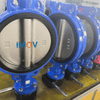
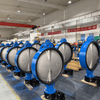
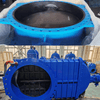
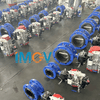
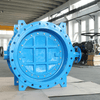
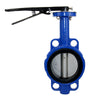
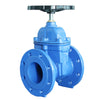
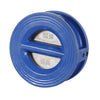
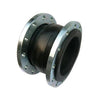
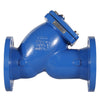
Thanks For the best post very useful information .Thank you for sharing this post and help full content.